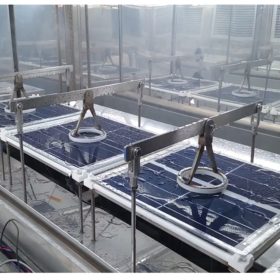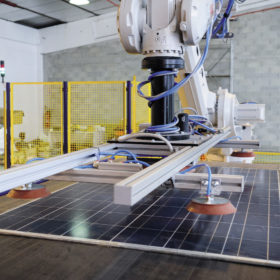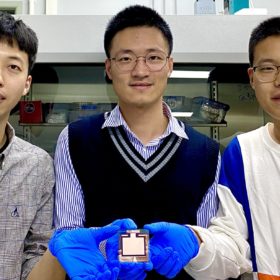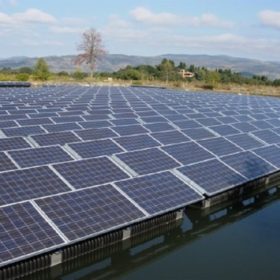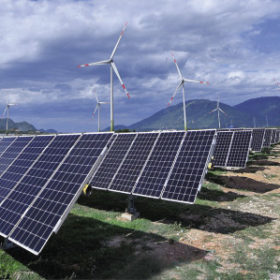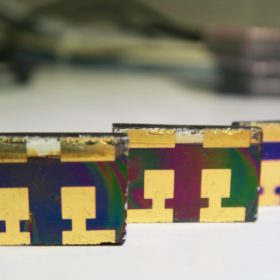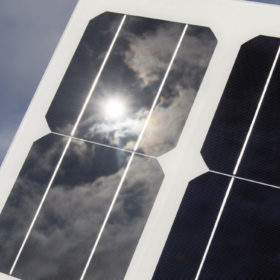Triple junction perovskite cell hits 16.8% efficiency
Scientists in the Netherlands fabricated three different perovskite layers, all using the same process. The three cells are all tuned to different bandgaps in order to absorb different wavelengths of light. A triple-junction device incorporating all three achieved 16.8% conversion efficiency. This, the researchers say, is a promising result for the technology, though would require the development of new wide-bandgap perovskites to push much further.
A chemical tune up for better perovskites
Scientists in the United States took a closer look at the way charges move through a perovskite material, and found that replacing hydrogen in the material with a heavier isotope can both reduce thermal conductivity and increase carrier lifetime, potentially leading to more efficient solar cells. And the group expects continuing study of charge states and molecule dynamics to yield further important discoveries.
A stress test for all seasons
Scientists led by the U.S. National Renewable Energy Laboratory (NREL) have developed a new stress testing protocol for PV modules, one designed to simultaneously expose modules to multiple stresses, as they likely would be in the field. Putting modules through this test, the researchers have already been able to reveal new information regarding backsheet degradation, and they promise new insights into other degradation mechanisms both known and unknown as well.
The weekend read: Circular innovations
Slowly but surely, environmental concerns are making their way into mainstream thought throughout the PV industry. A look at recycling offers an example of this, with stakeholders trying to get ahead of the high volumes of end-of-life modules already on the horizon. pv magazine examines the technologies that will be needed, alongside policy and economic support, to keep the bulk of these modules out of landfill and ultimately to establish a circular economy for PV materials.
Additive allows all-perovskite tandems to hit 24.2% efficiency
Scientists led by China’s Nanjing University discovered that a chemical commonly used for bleaching in the textile industry can also serve as a performance-boosting additive to mixed lead/tin perovskite thin films. Using this additive, they were ultimately able to fabricate a two perovskite tandem cell measuring 1.05cm² that achieved 24.2% efficiency.
Investigating bifacial for floating PV
Scientists led by the University of Ontario modeled the performance of bifacial modules in floating PV applications, finding that in a north/south orientation at a 30 degree angle, the modules could receive as much as 55% more sunlight than a monofacial module in the same setup.
Copper metallization process reaches pilot production in Germany
Scientists led by staff from Germany’s Fraunhofer ISE have demonstrated a new laser printing process in pilot production, which could replace silver paste and screen printing in solar cell manufacturing. The system is said to offer much more flexibility in the layout of contact fingers on the cell surface and a wider choice of metallization materials.
Nuclear ‘not an effective low carbon option’
Researchers in the UK have analyzed 25 years of electricity-production and carbon emissions data from 123 countries. Their findings show renewables are considerably more effective than nuclear in reducing carbon emissions from energy generation and that the two technologies tend to get in each other’s way when considered in a joint approach.
Chemical assist for stable perovskite cells at 23% efficiency
Scientists at the École Polytechnique Fédérale de Lausanne have developed a new ‘chemical innovation’, for the deposition of perovskite solar cells onto a substrate. The method is shown to produce cells at better than 23% efficiency, that remained stable after 500 hours testing at a raised temperature.
DSM exits coatings business in €1.6bn deal
Dutch materials company DSM has sold its resins and functional materials businesses, which encompass its anti-reflective and anti-soiling solar glass coating products. That will mean a focus on module backsheets in DSM’s Advanced Solar business unit.



